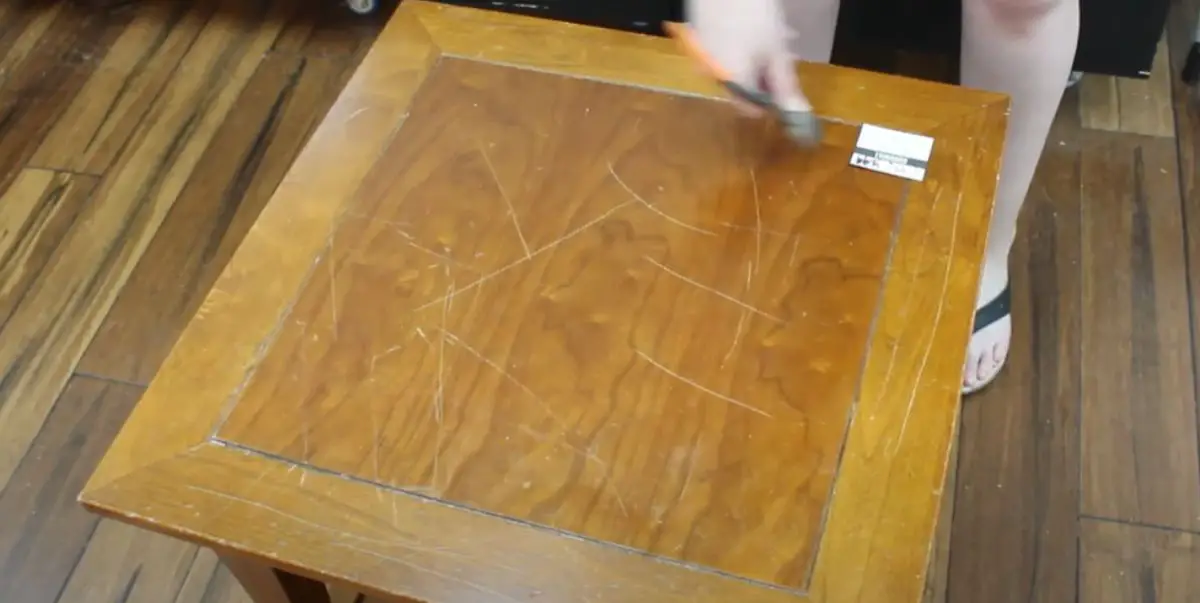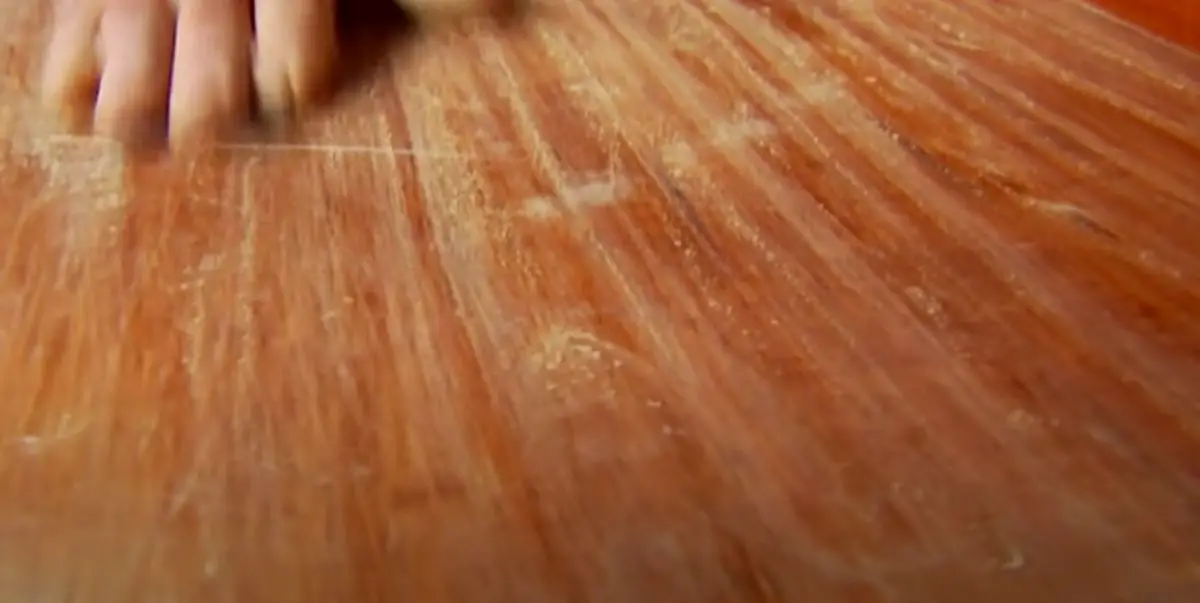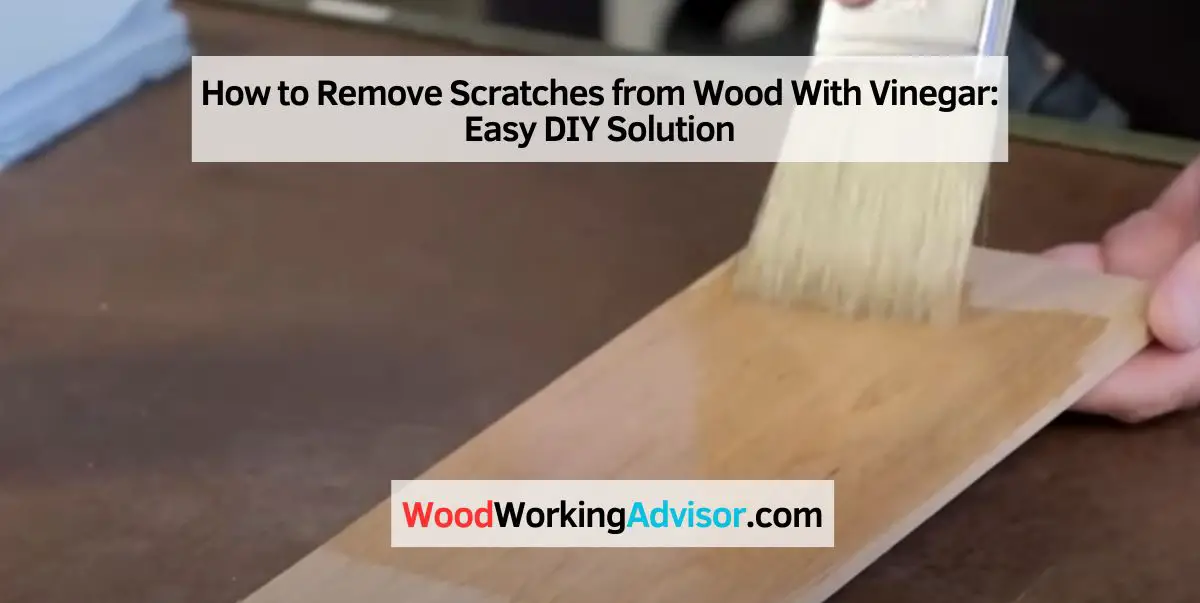To remove scratches from wood, use vinegar as a natural solution. Its acidic properties aid in the repair process.
Wood furniture adds a touch of elegance and warmth to any home, but scratches can quickly detract from its beauty. While there are many commercial products available to fix scratches, they can be expensive and contain harmful chemicals. Instead, consider using vinegar, a natural and cost-effective solution.
Vinegar’s acidity makes it effective for removing scratches from wood surfaces. We will outline the step-by-step process of using vinegar to restore your wood furniture to its former glory. Follow these simple instructions to eliminate scratches and enjoy your furniture’s renewed appearance.
Understanding Wood Scratches
Welcome to our blog post on how to remove scratches from wood with vinegar. In this section, we will explore the topic of understanding wood scratches. Whether you have a beautiful wooden table or a cherished wooden floor, scratches can be a frustrating sight. But fear not! By gaining a better understanding of the causes and types of wood scratches, you will be better equipped to tackle them head-on.
Causes Of Scratches
Wood scratches can occur due to various reasons. Here are some common causes:
- Pets: Playful dogs or mischievous cats can unintentionally leave scratches on your wooden surfaces.
- Furniture: Moving furniture without proper protective pads can cause deep scratches.
- Everyday use: Regular activities such as placing objects, dragging items, or scrubbing surfaces can leave minor scratches over time.
- Accidents: Spills, sharp objects, or accidental impact can result in noticeable scratches on wood.
Types Of Wood Scratches
Wood scratches can vary in severity and appearance. Understanding the different types of wood scratches can help you determine the best approach to removing them. Here are some common types:
- Surface scratches: Superficial scratches that only affect the topmost layer of the wood. These scratches are usually shallow and can be easily buffed out.
- Deep gouges: These are more severe scratches that penetrate deeper into the wood. They may require more extensive repair techniques to completely eliminate.
- Visible scuffs: Scuffs are a milder form of scratches that cause discolored or rough patches on the wood’s surface. They are typically easier to treat compared to deeper scratches.
- Patterned scratches: Scratches that follow a distinct pattern, such as those caused by dragging a heavy object across the wooden surface. These may require specific methods to address their unique shape.
Now that you have a better understanding of wood scratches, you’ll be better prepared to tackle them effectively. In the next section, we will dive into the process of removing scratches from wood using vinegar. Stay tuned!

The Power Of Vinegar
Discover the power of vinegar in removing scratches from wood. Inexpensive and readily available, vinegar is a versatile solution that can effectively restore the beauty of your wooden surfaces. In this post, we will explore the properties of vinegar and its effectiveness in addressing wood scratches.
Properties Of Vinegar
Vinegar, composed primarily of acetic acid and water, has long been prized for its versatile cleaning properties. Its natural acidity gives vinegar its cleaning and disinfecting abilities, making it a popular household item for various cleaning purposes. When used on wood, vinegar not only helps remove scratches but also acts as a natural disinfectant, killing bacteria that may be present on the surface.
Effectiveness On Wood Scratches
Vinegar is particularly effective in removing superficial scratches from wood surfaces. The mild acidity of vinegar combined with its cleaning properties helps to gently break down the damaged wood fibers, minimizing the appearance of scratches. By using vinegar, you can effectively reduce the visibility of minor scratches, restoring the smooth and pristine look of your wooden furniture or flooring.
It is important to note that vinegar is most effective on light or shallow scratches. Deeper or more severe scratches may require additional treatment or professional assistance. It is always recommended to test vinegar on a small, inconspicuous area before applying it to larger, more visible surfaces, as the acidity of vinegar may affect the finish of certain types of wood.
Using vinegar to remove scratches from wood is a simple and cost-effective solution that can yield noticeable results. The following section will provide step-by-step instructions on how to use vinegar to address wood scratches effectively.
Diy Vinegar Solution
Do you have scratches on your wooden furniture that need to be removed? Look no further than a simple DIY vinegar solution. Vinegar is a versatile household product that can be used for cleaning, disinfecting, and even removing scratches from wood. In this guide, we will walk you through the process of creating and applying a DIY vinegar solution to eliminate scratches from your wooden surfaces.
Ingredients Required
To create the DIY vinegar solution, you will need:
- White vinegar: Acts as a natural cleaning agent and helps to remove stains and scratches from wood.
- Olive oil: Provides moisture to the wood and helps to restore its natural luster.
- Microfiber cloth: Used for applying the vinegar solution and buffing the wood surface.
Step-by-step Application
Follow these simple steps to remove scratches from wood using the DIY vinegar solution:
- Mix the vinegar solution: In a small bowl, combine equal parts white vinegar and olive oil.
- Apply the solution: Dip a microfiber cloth into the vinegar solution and gently rub it onto the scratched area of the wood.
- Buff the surface: Use a clean microfiber cloth to buff the wood, removing any excess solution and restoring its shine.
- Repeat as needed: For deeper scratches, you may need to repeat the process multiple times until the desired results are achieved.
Maintaining Wood After Treatment
Once you have successfully removed scratches from wood using vinegar, it is important to take the necessary steps to maintain the wood and prevent future damage. By following a few simple protective measures and regular maintenance tips, you can keep your wood looking beautiful and scratch-free for years to come.
Protective Measures
Protecting your wood from scratches can go a long way in preserving its natural beauty. Here are some protective measures you can implement:
- Use furniture pads or coasters underneath objects that may potentially scratch the wood surface.
- Place doormats at entryways to trap dirt and abrasive particles that can cause scratches.
- Avoid dragging heavy objects across the wood surface; instead, lift and move them carefully.
- Apply felt or rubber pads to the bottom of furniture legs to prevent scratches when moving or rearranging your furniture.
- Consider using a tablecloth or placemats on dining tables to provide an additional layer of protection.
Regular Maintenance Tips
Maintaining your wood regularly will help ensure its longevity and prevent the need for frequent scratch removal. Here are some tips for regular maintenance:
- Dust your wood surfaces regularly using a soft cloth or a microfiber duster to remove dirt and debris.
- Wipe up spills immediately to prevent moisture from seeping into the wood and causing damage.
- Use a gentle wood cleaner or a mixture of vinegar and water to clean your wood surfaces. Avoid harsh chemicals that can strip away the protective finish.
- If your wood has a protective finish, periodically apply a wood polish or wax to keep it looking shiny and protected.
- Avoid placing your wood furniture in direct sunlight or near heat sources, as these can cause the wood to dry out and potentially lead to cracking or warping.
By following these protective measures and regular maintenance tips, you can maintain the beauty of your wood surfaces and reduce the likelihood of scratches appearing. Remember, prevention is key when it comes to keeping your wood looking its best.

Frequently Asked Questions For How To Remove Scratches From Wood With Vinegar
Does Olive Oil And Vinegar Remove Scratches?
No, olive oil and vinegar do not remove scratches. They may temporarily mask minor scratches but cannot fix or remove them completely. It’s better to use appropriate scratch removal products or consult a professional for deep scratches.
How Do You Get Scratches Out Of Wood?
To remove scratches from wood, use a soft cloth and apply a wood polish or wax over the scratch. Gently rub the area in the direction of the wood grain until the scratch is no longer visible. If the scratch is deep, consider consulting a professional woodworker for repairs.
Does Toothpaste Remove Scratches From Wood?
No, toothpaste does not remove scratches from wood. Toothpaste is not designed for wood repair and may even damage the wood surface. It is better to use appropriate wood repair products or seek professional help for fixing scratches on wood surfaces.
What Is The Best Polish For Scratched Wood?
The best polish for scratched wood is a product specifically designed for wood repairs and restoration. Look for a polish that fills in scratches and provides a protective finish. Farewell Scratch, Restore Shine, and Scratch Remover are some popular options.
Conclusion
Using vinegar is an effective and natural way to remove scratches from wood surfaces. This method is affordable and environmentally friendly, making it a great alternative to harsh chemical solutions. By following the steps outlined in this guide, you can easily restore the beauty of your wooden furniture and flooring.
Embrace the power of vinegar for a sustainable approach to wood maintenance.



One thought on “How to Remove Scratches from Wood With Vinegar: Easy DIY Solution”